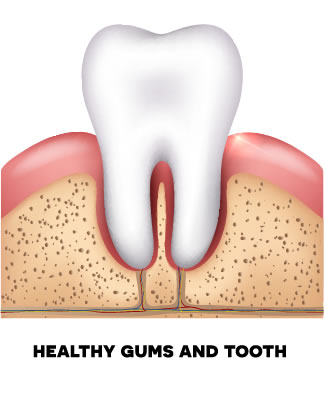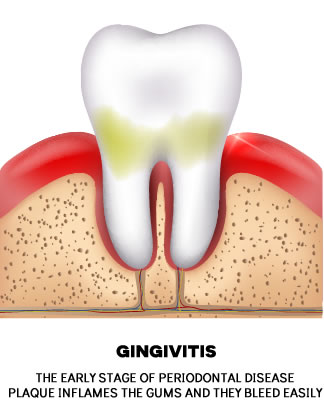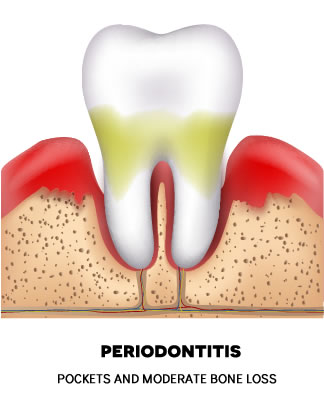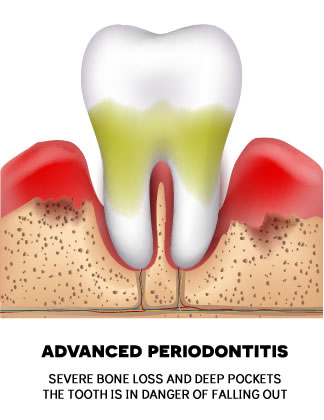Gum Disease Treatment
What is gum disease caused by?
Gum disease is caused by the presence of plaque, which forms on the teeth every day after brushing.
How likely am I to suffer from gum disease?
Approximately 50% of the population experience some degree of damage to the bone and surrounding tissues from gum disease. 10-15% present with more advanced forms, which can result in the loss of teeth.
Some medical conditions, such as diabetes, can influence the extent of the disease. Other factors that also can aggravate existing periodontal disease include smoking and stress.




How can I tell if I have gum disease?
The main signs of gum disease include bleeding gums, loose teeth, receding gums, teeth moving position, tenderness, swelling, redness, abscess (pus), bad breath and/or taste.
In many cases, there may be no signs or symptoms. Gum disease can only be detected by a comprehensive clinical examination
How are gum diseases treated?
Gum disease (periodontitis) can in most cases be controlled, to avoid further loss of bone around the teeth,.
Oral hygiene instruction and advice
Good oral hygiene reduces the number of bacteria in the mouth and therefore reduces the amount of gum inflammation. The causes of your gum disease are discussed at this appointment and we explain exactly how to keep your teeth and gums clean. Individual tailored advice will be given to show you how to best use the various cleaning aids most effectively.

Non-surgical periodontal therapy
Depending on the improvement seen in the plaque control and gum health, the next step would be to remove all bacterial deposits and calculus (tartar) from the root surfaces and gingival pockets.
Reassessment
The healing response of your gums to treatment will be evaluated by measuring the depths of the pockets and the amount of bleeding found, eight to twelve weeks later. At this stage we can determine whether you may require any other form of treatment (surgical therapy) or whether we can move you on to the maintenance stage.
Surgical therapy
Sometimes, a localised surgical procedure is carried out to clean away plaque bacteria and calculus (tartar) on the root surfaces under the gum.
Under local anaesthesia, the gum is lifted and the root surfaces are cleaned under direct sight to ensure that all the deposits are removed. In some cases, it is even possible to treat bone loss at the same time using a special regenerative treatment. At the end of the procedure, the gums are sutured back into place around the teeth.
Aftercare and maintenance (supportive periodontal therapy)
It is essential that all periodontal patients receive regular maintenance treatment and careful monitoring, once some stability has been achieved. This is usually done at 3 monthly intervals, either by a periodontist or by a dental hygienist under prescription, depending on individual needs.
Regular follow-up appointments are vitally important to ensure that the disease process does not reoccur. If there are signs of continuing disease, at your maintenance visits we will be able to identify new or recurring sites of inflammation and treat them at an early stage. You will also be given advice on how to modify your oral hygiene practices to tackle the inflammation.
Successful periodontal treatment requires your full co-operation with regards to daily oral hygiene practices and dental attendance.
